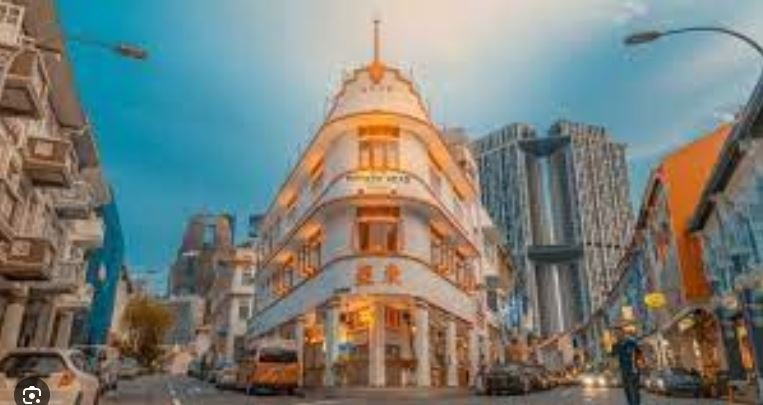Creating dramatic night shots of iconic structures is an art that requires meticulous planning, technical skill, and a keen eye for detail. Night photography can transform ordinary buildings into breathtaking spectacles, capturing their essence in a whole new light.

Choosing the Right Equipment
Choosing the right equipment is crucial for successful night photography. A high-quality DSLR or mirrorless camera with good low-light performance is essential. Additionally, a sturdy tripod is necessary to avoid camera shake during long exposures. A remote shutter release or timer can further minimize any movement.
Understanding Exposure Settings
Understanding exposure settings is key to capturing dramatic night shots. Night photography often requires long exposure times, a wide aperture, and a high ISO setting. These settings allow more light to reach the camera sensor, creating bright and clear images even in low-light conditions.
Using Manual Mode
Using manual mode gives photographers complete control over their camera settings. This control is vital for night photography, where automatic settings might not yield the best results. Manually adjusting the aperture, shutter speed, and ISO allows for greater creativity and precision.
The Importance of Aperture
The importance of aperture in night photography cannot be overstated. A wide aperture (low f-number) allows more light into the camera, which is crucial in low-light conditions. However, striking a balance is important to ensure a sharp focus on the entire structure.
Mastering Long Exposures
Mastering long exposures is essential for capturing dramatic night shots. Long exposures allow for the collection of more light, resulting in well-lit and detailed images. Experimenting with different exposure times can yield stunning effects, such as light trails from passing cars or the glow of city lights.
Utilizing ISO Settings
Utilizing ISO settings effectively can enhance night shots. A higher ISO increases the camera’s sensitivity to light, which is helpful in dark environments. However, it’s important to find a balance, as extremely high ISO settings can introduce noise to the image.
Focusing Techniques
Focusing techniques are crucial in low-light photography. Manual focus is often more reliable than autofocus in these conditions. Using live view and zooming in on the subject can help achieve precise focus. Ensuring sharpness in key areas of the structure adds to the dramatic effect.
Composition Tips
Composition tips play a vital role in creating compelling night shots. Framing the structure creatively, using leading lines, and incorporating interesting foreground elements can enhance the overall composition. Paying attention to symmetry and balance helps create visually appealing images.
Revisiting the Thrill of Baccarat Casino
Baccarat remains a popular choice for those seeking dynamic and engaging digital entertainment. The game’s simplicity and potential for exciting wins make it appealing. To enjoy this classic card game online, revisit baccarat casino. This platform offers a seamless interface and the opportunity to experience the excitement of the game whenever you desire.
Capturing Light Trails
Capturing light trails can add a dynamic element to night shots. By using long exposures, photographers can capture the movement of lights from vehicles or other sources, creating stunning visual effects. Light trails can lead the viewer’s eye through the image, adding depth and interest.
Playing with Reflections
Playing with reflections can create dramatic effects in night photography. Reflections in water, glass, or other surfaces can add an extra layer of interest to the image. Incorporating reflections can also enhance the sense of depth and symmetry in the photograph.
Post-Processing Techniques
Post-processing techniques are essential for perfecting night shots. Adjusting brightness, contrast, and color balance can enhance the dramatic effect. Noise reduction is often necessary for high-ISO images. Software like Adobe Lightroom and Photoshop can be powerful tools for refining night photographs.
Understanding Light Pollution
Understanding light pollution is important for night photography. Light pollution from streetlights and buildings can affect the quality of the images. Finding locations with minimal light pollution or using techniques to mitigate its effects can result in clearer, more dramatic shots.
Incorporating Natural Light Sources
Incorporating natural light sources, such as the moon or stars, can add a magical element to night shots. Timing the shoot to coincide with these natural light sources can create stunning effects. Understanding how to balance artificial and natural light is key to capturing the perfect shot.
Conclusion
Creating dramatic night shots of iconic structures involves a combination of technical skill, creativity, and careful planning. By understanding and mastering the various aspects of night photography, photographers can capture stunning images that highlight the beauty and grandeur of architectural marvels. Whether it’s through the use of long exposures, playing with light trails, or incorporating reflections, the possibilities for creating dramatic night shots are endless.
